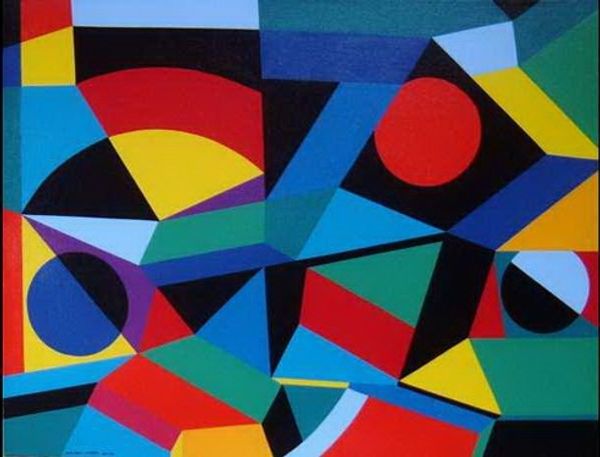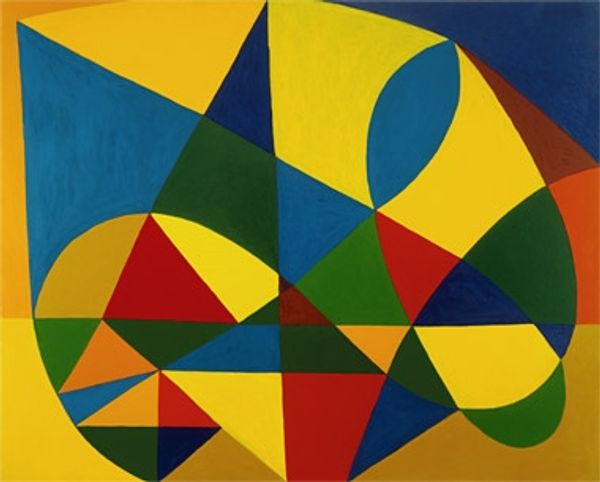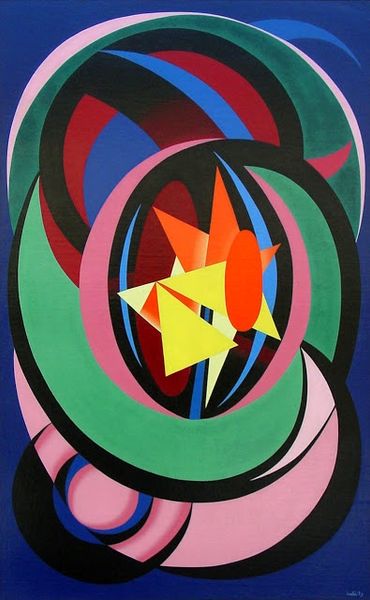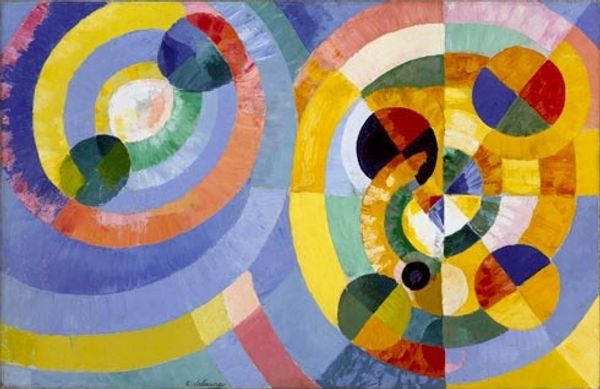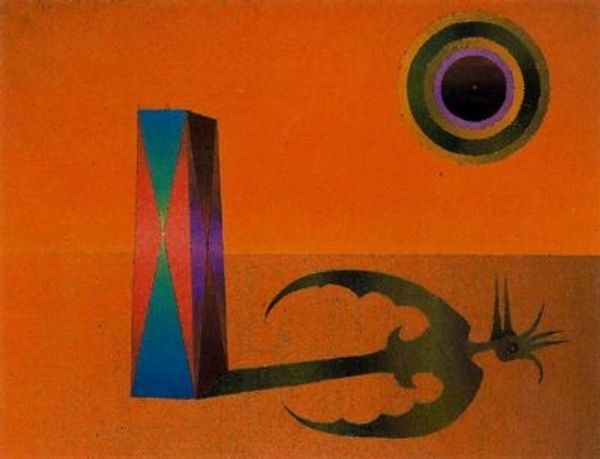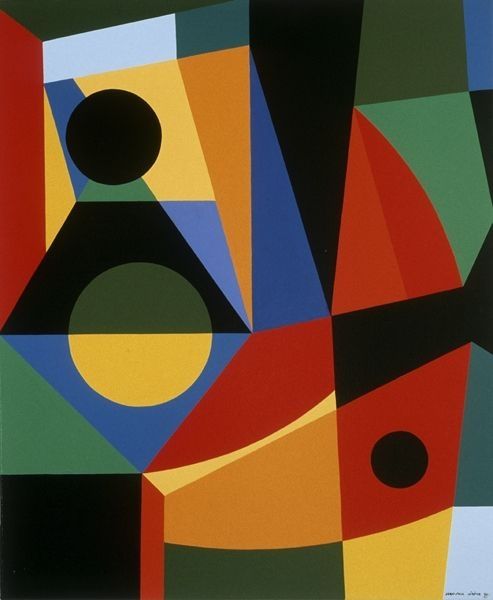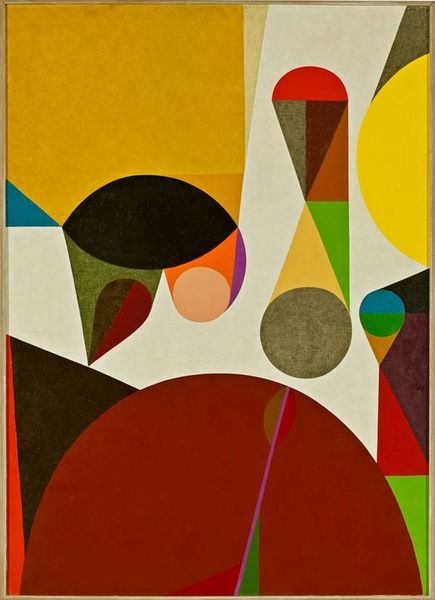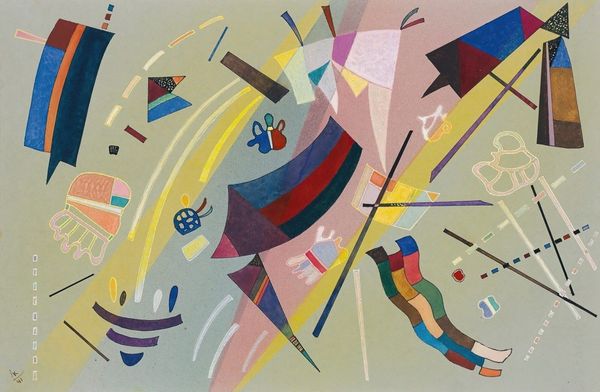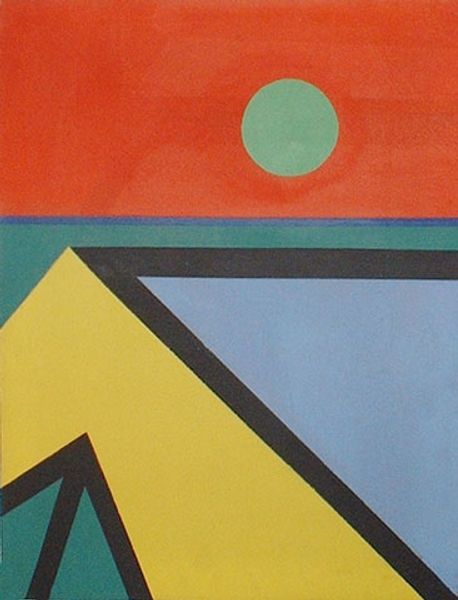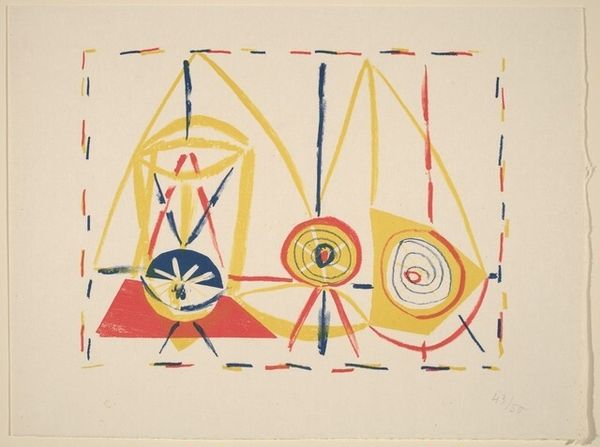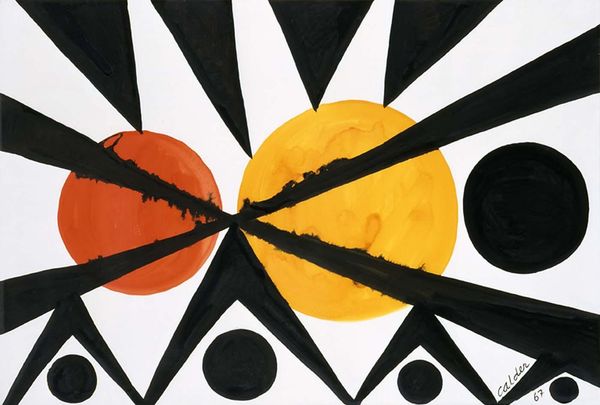
acrylic-paint
#
cubism
#
op art
#
pop art
#
acrylic-paint
#
geometric
#
abstraction
#
modernism
#
hard-edge-painting
Copyright: Auguste Herbin,Fair Use
Curator: Auguste Herbin created "Synchromy in Dark Blue" in 1941. At first glance, the composition may appear purely abstract. Editor: My immediate impression is a playful chaos, a sort of controlled explosion of shape and color contained by the dark blue. It feels…optimistic, despite the war-torn context. Curator: I find it intriguing that Herbin created this work during the Second World War. Abstraction often served as a form of resistance, a way to create meaning outside of the dominant ideologies. Do you see any symbolic coding here, or do you find the shapes self-referential? Editor: I'm drawn to how he achieved such sharp divisions between the colors; what strikes me most is the commitment to the integrity of each individual color as an object. It begs the question: What paints were available? How carefully were they mixed? These colors aren't trying to blend – they’re declaring themselves. Curator: Well, let's consider his material choices, given the availability of artist supplies during the war years. I imagine procuring rich pigments like those found in the concentric arcs of color would have presented something of a challenge in itself, no? Editor: Exactly! The very act of acquiring these paints feels defiant. Each triangle, each arc, carefully laid – it’s a testament to material defiance against austerity. Curator: It seems, as a modernist and later, a hard-edge painter, he worked with geometric forms to elicit feeling... But I do wonder, what subconscious associations may seep through given his interest in esoteric symbolism later in his career? The colors might speak in ways he never explicitly plotted. Editor: Perhaps he aimed to create a new visual language from readily available pieces; regardless of whether that language could resolve fully into specific figures or be easily translatable into existing modes of expression is ultimately besides the point. What matters, surely, is his process. Curator: Yes, and looking back at this piece I have a strong sense that we can see those beginnings quite powerfully. Editor: I find myself wondering what other challenges impacted production: Material scarcity, but perhaps also lack of space, and other resources... So much of the meaning for me hinges on process and its historical reality.
Comments
No comments
Be the first to comment and join the conversation on the ultimate creative platform.
